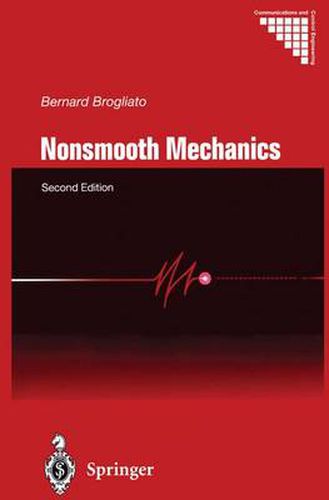Readings Newsletter
Become a Readings Member to make your shopping experience even easier.
Sign in or sign up for free!
You’re not far away from qualifying for FREE standard shipping within Australia
You’ve qualified for FREE standard shipping within Australia
The cart is loading…






This title is printed to order. This book may have been self-published. If so, we cannot guarantee the quality of the content. In the main most books will have gone through the editing process however some may not. We therefore suggest that you be aware of this before ordering this book. If in doubt check either the author or publisher’s details as we are unable to accept any returns unless they are faulty. Please contact us if you have any questions.
Thank you for opening the second edition of this monograph, which is devoted to the study of a class of nonsmooth dynamical systems of the general form: ::i; = g(x,u) (0. 1) f(x, t) 2: 0 where x E JRn is the system’s state vector, u E JRm is the vector of inputs, and the function f (-, . ) represents a unilateral constraint that is imposed on the state. More precisely, we shall restrict ourselves to a subclass of such systems, namely mechanical systems subject to unilateral constraints on the position, whose dynamical equations may be in a first instance written as: ii= g(q,q,u) (0. 2) f(q, t) 2: 0 where q E JRn is the vector of generalized coordinates of the system and u is an in put (or controller) that generally involves a state feedback loop, i. e. u= u(q, q, t, z), with z= Z(z, q, q, t) when the controller is a dynamic state feedback. Mechanical systems composed of rigid bodies interacting fall into this subclass. A general prop erty of systems as in (0. 1) and (0. 2) is that their solutions are nonsmooth (with respect to time): Nonsmoothness arises primarily from the occurence of impacts (or collisions, or percussions) in the dynamical behaviour, when the trajectories attain the surface f(x, t) = O. They are necessary to keep the trajectories within the subspace = {x : f(x, t) 2: O} of the system’s state space.
$9.00 standard shipping within Australia
FREE standard shipping within Australia for orders over $100.00
Express & International shipping calculated at checkout
This title is printed to order. This book may have been self-published. If so, we cannot guarantee the quality of the content. In the main most books will have gone through the editing process however some may not. We therefore suggest that you be aware of this before ordering this book. If in doubt check either the author or publisher’s details as we are unable to accept any returns unless they are faulty. Please contact us if you have any questions.
Thank you for opening the second edition of this monograph, which is devoted to the study of a class of nonsmooth dynamical systems of the general form: ::i; = g(x,u) (0. 1) f(x, t) 2: 0 where x E JRn is the system’s state vector, u E JRm is the vector of inputs, and the function f (-, . ) represents a unilateral constraint that is imposed on the state. More precisely, we shall restrict ourselves to a subclass of such systems, namely mechanical systems subject to unilateral constraints on the position, whose dynamical equations may be in a first instance written as: ii= g(q,q,u) (0. 2) f(q, t) 2: 0 where q E JRn is the vector of generalized coordinates of the system and u is an in put (or controller) that generally involves a state feedback loop, i. e. u= u(q, q, t, z), with z= Z(z, q, q, t) when the controller is a dynamic state feedback. Mechanical systems composed of rigid bodies interacting fall into this subclass. A general prop erty of systems as in (0. 1) and (0. 2) is that their solutions are nonsmooth (with respect to time): Nonsmoothness arises primarily from the occurence of impacts (or collisions, or percussions) in the dynamical behaviour, when the trajectories attain the surface f(x, t) = O. They are necessary to keep the trajectories within the subspace = {x : f(x, t) 2: O} of the system’s state space.